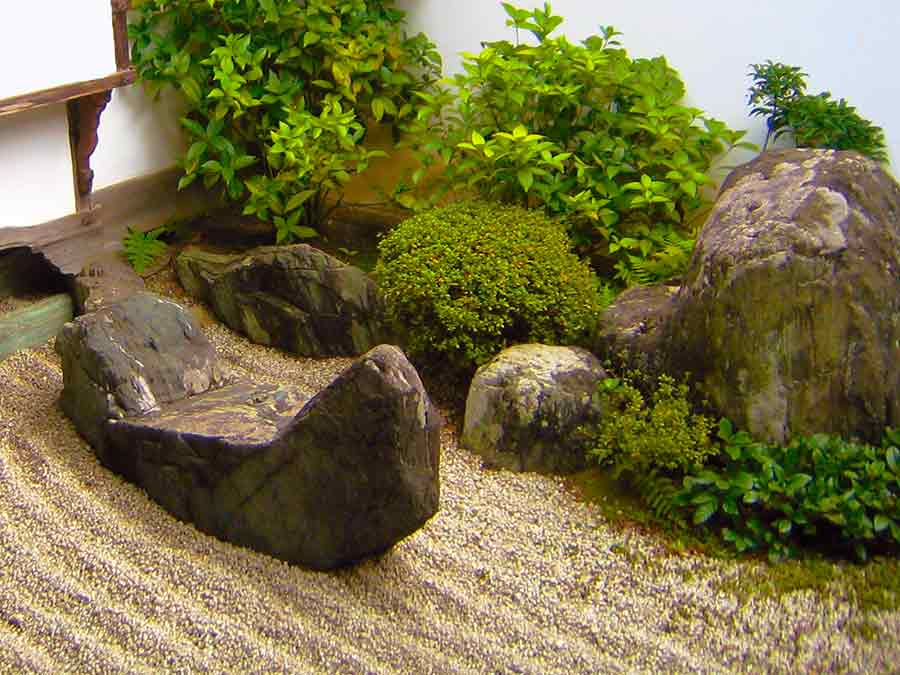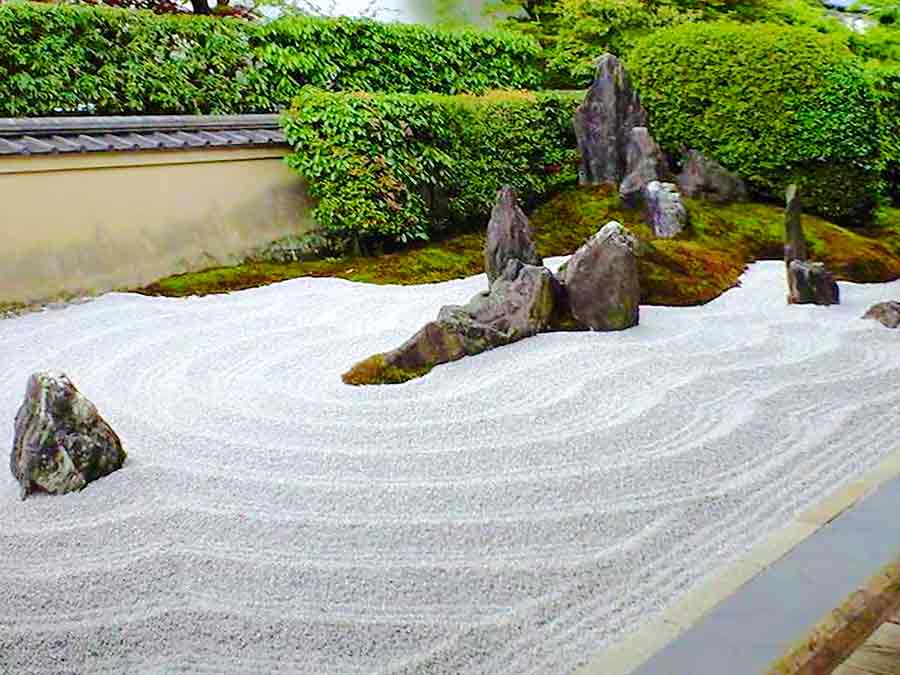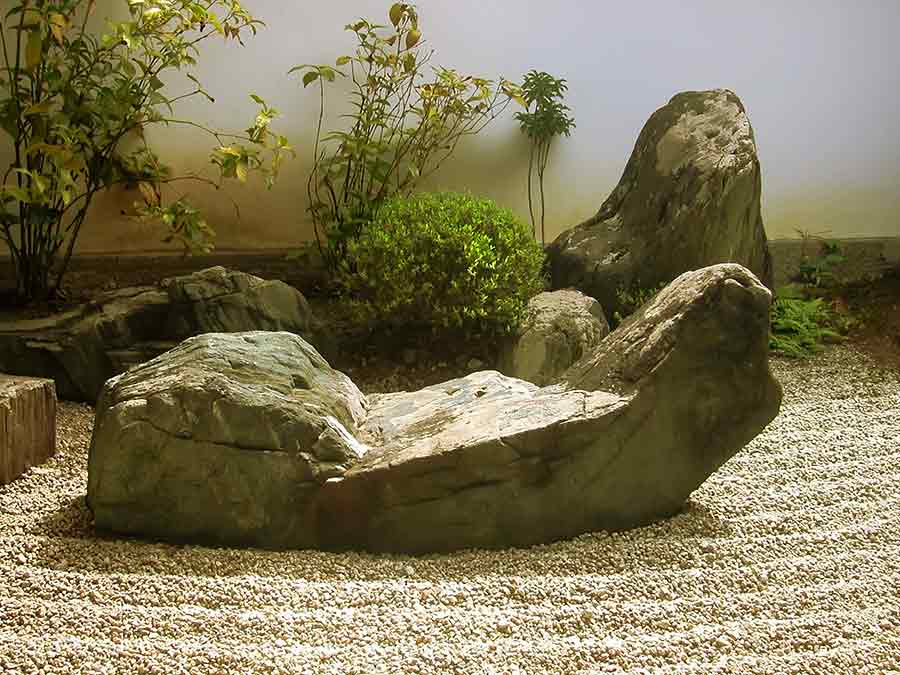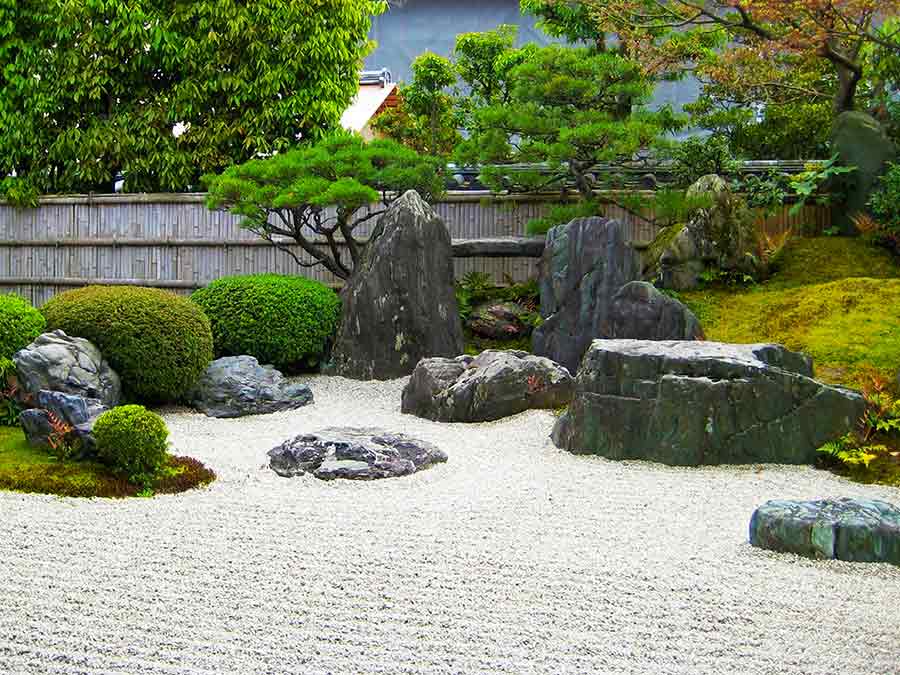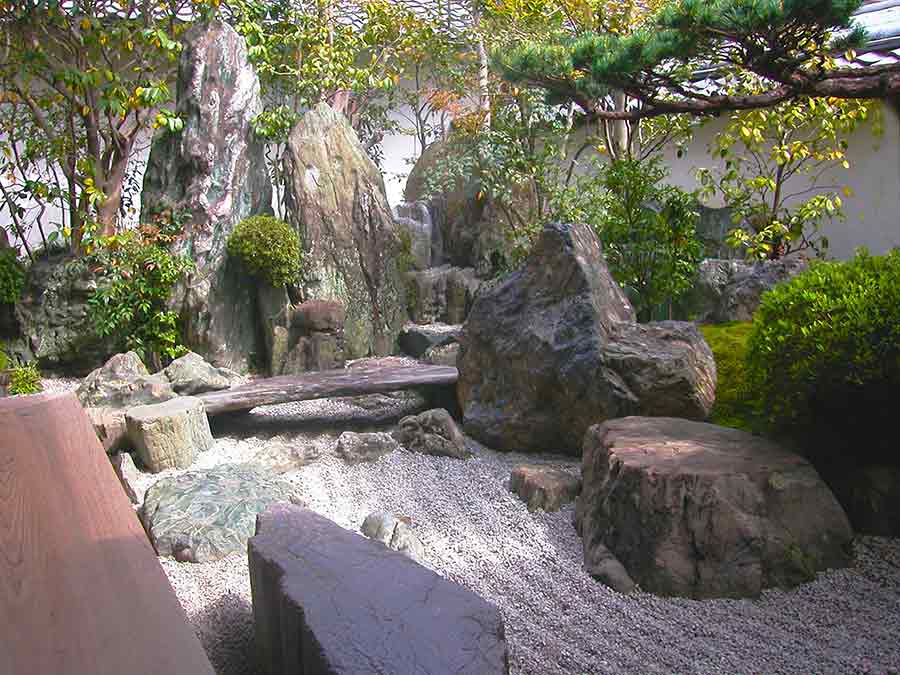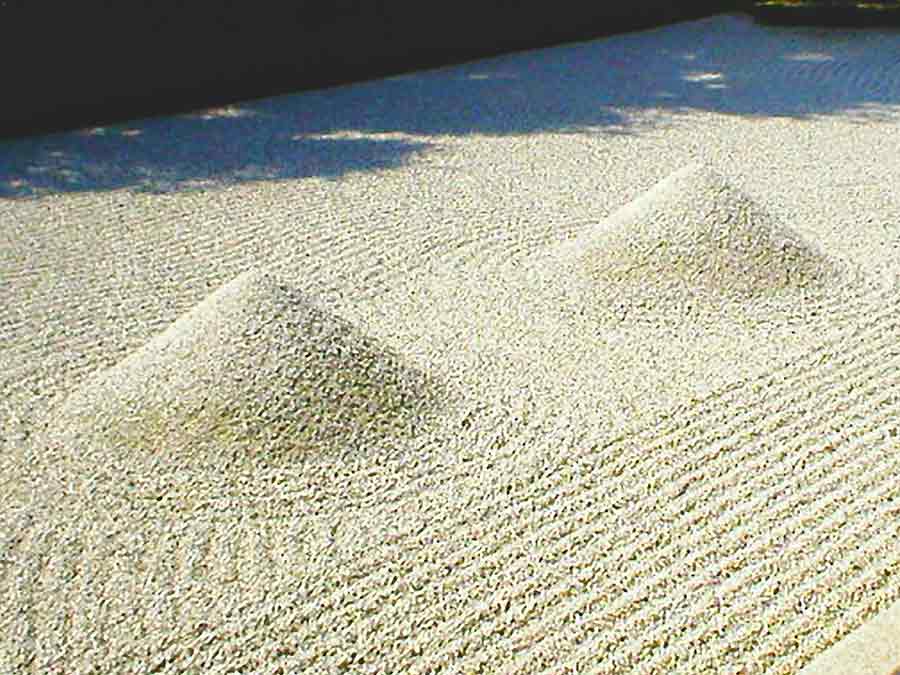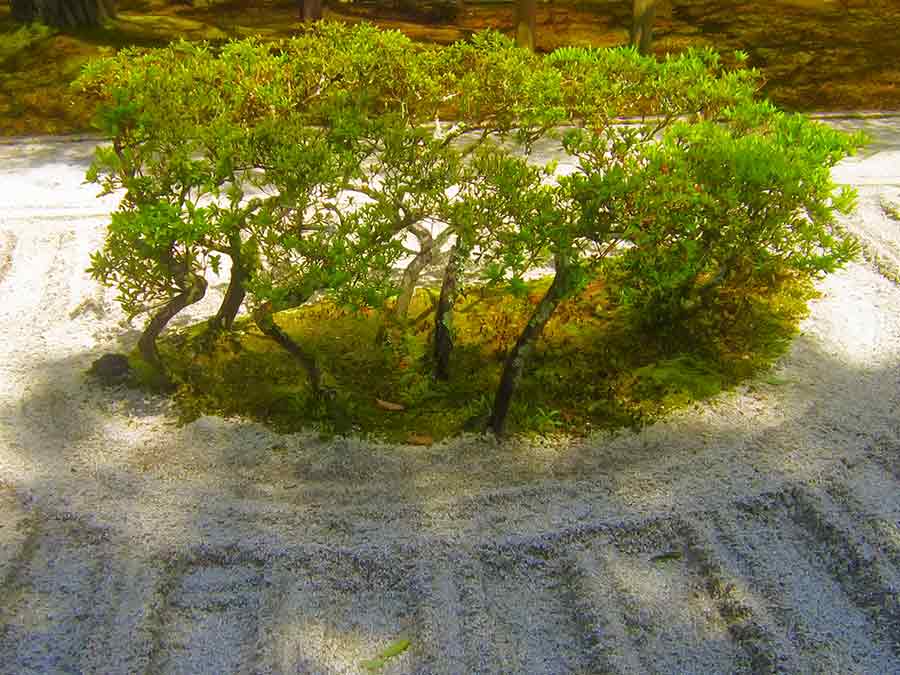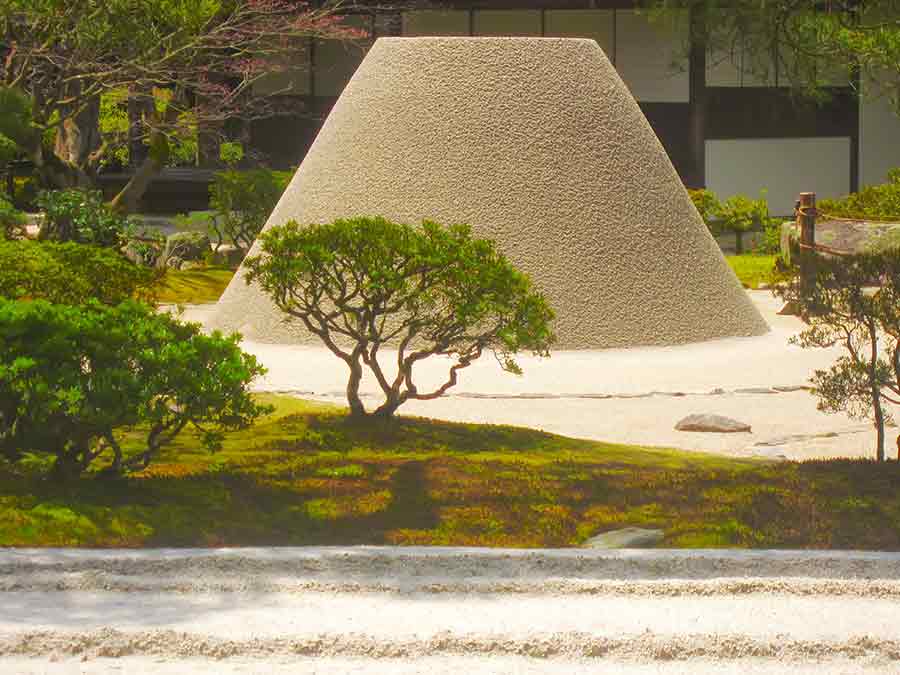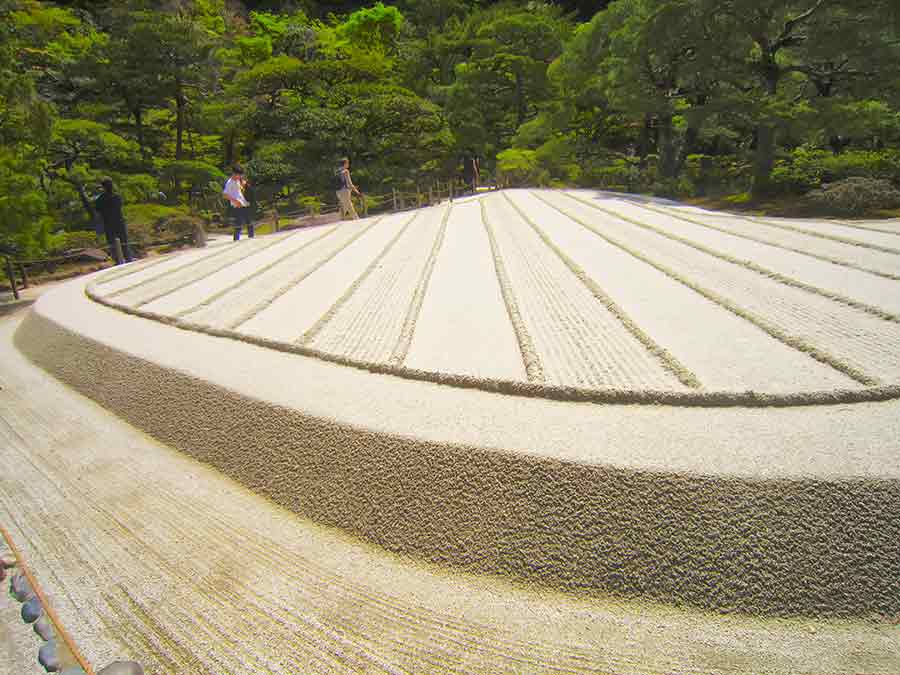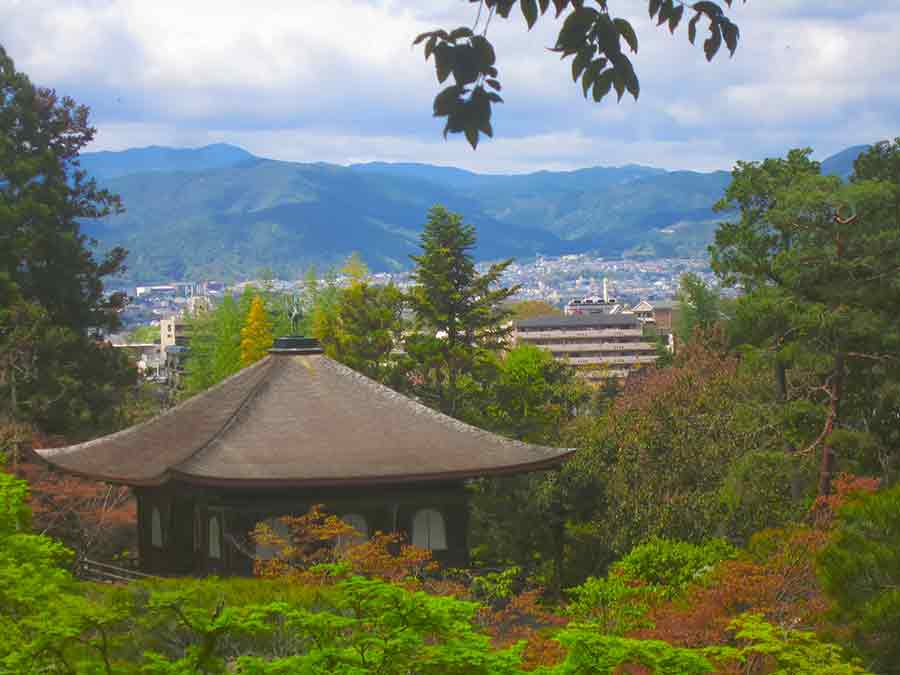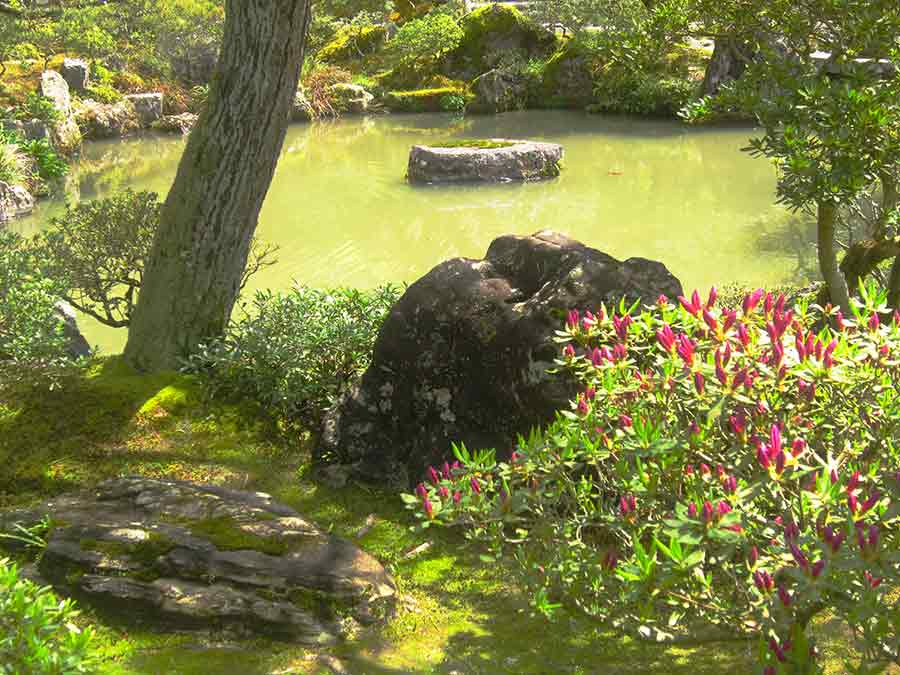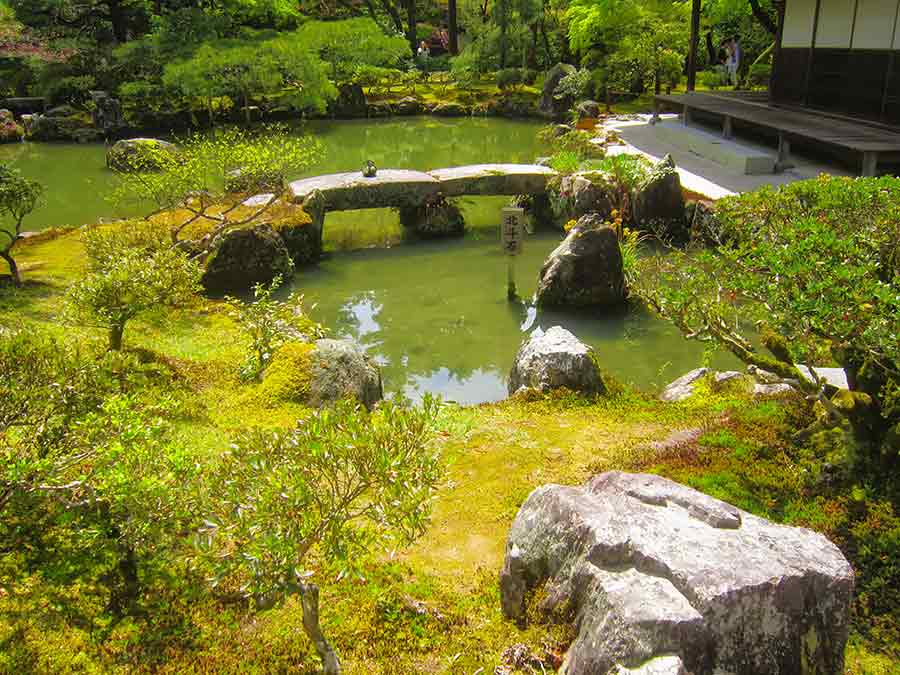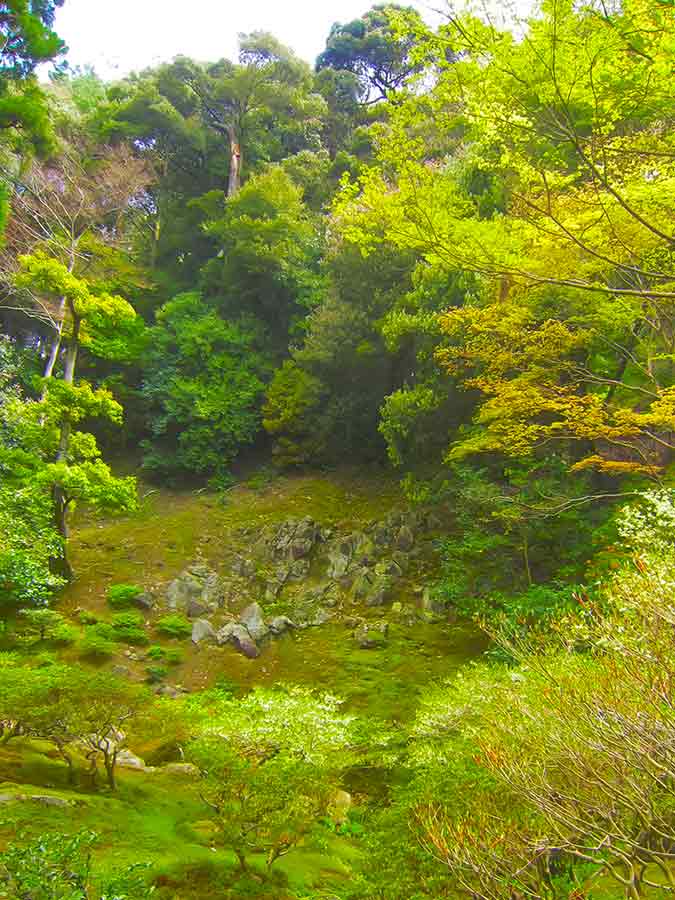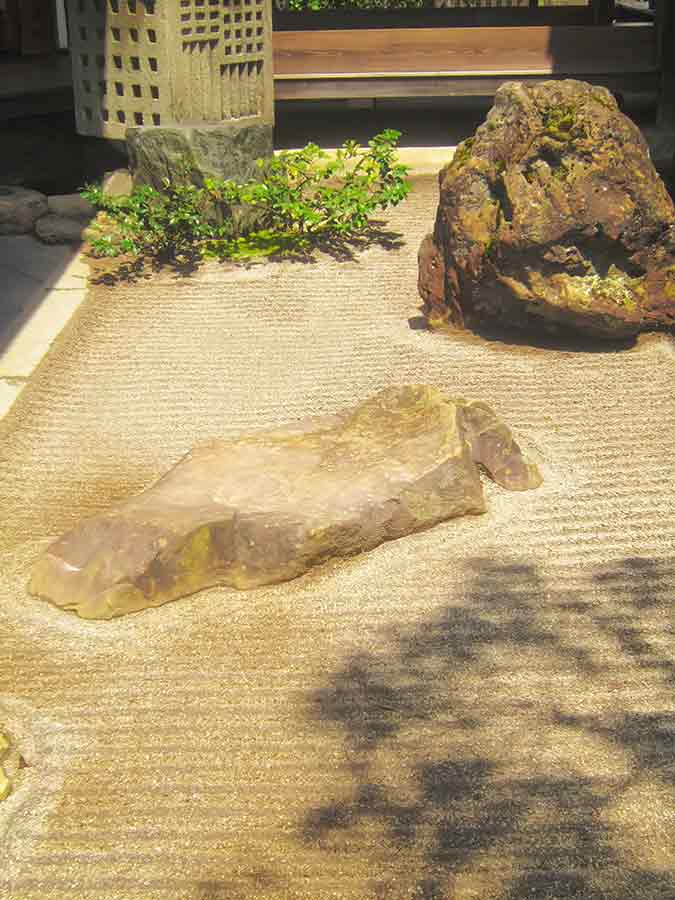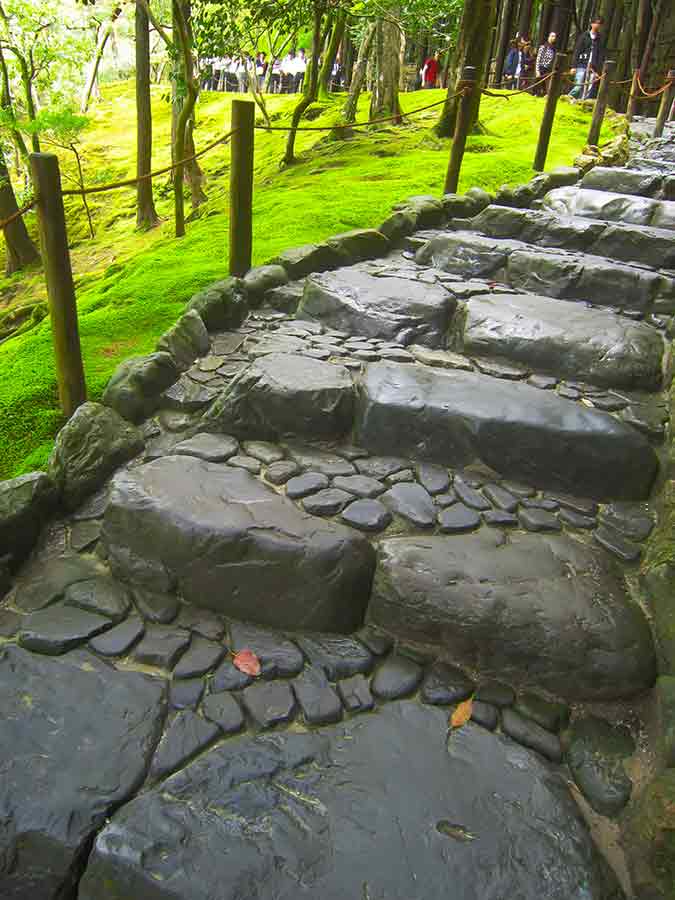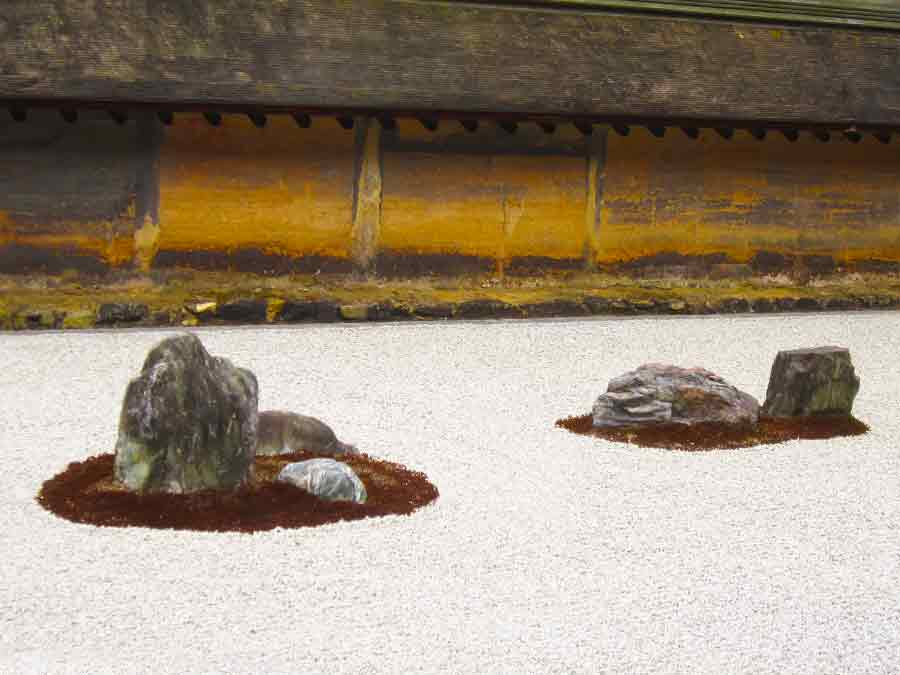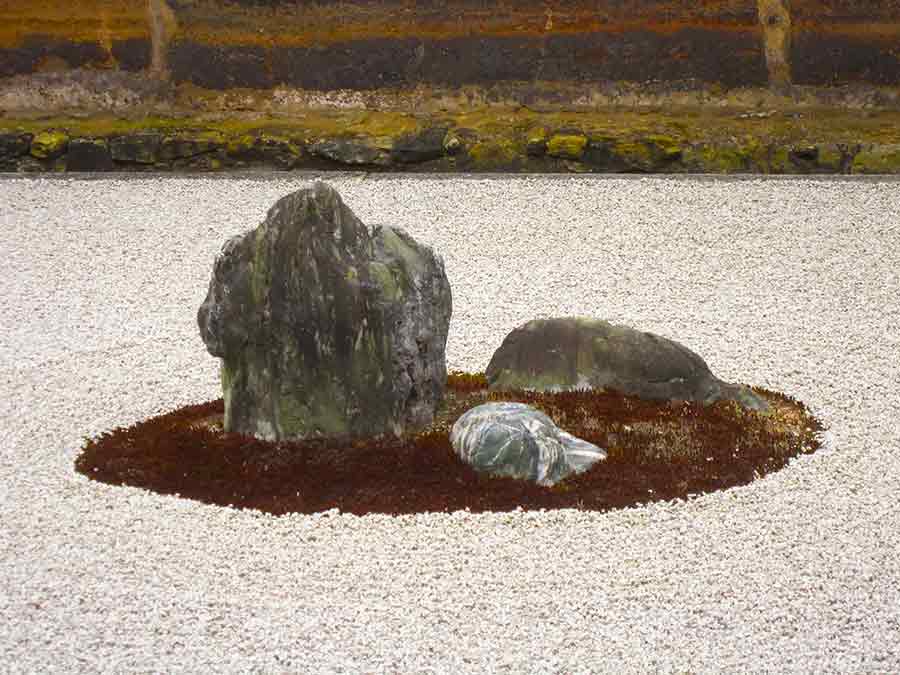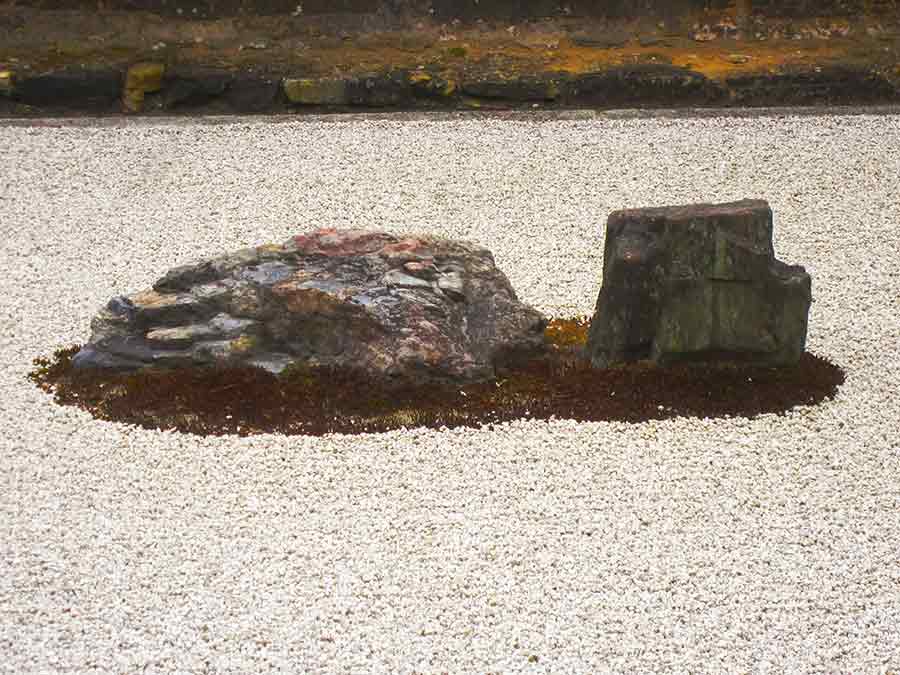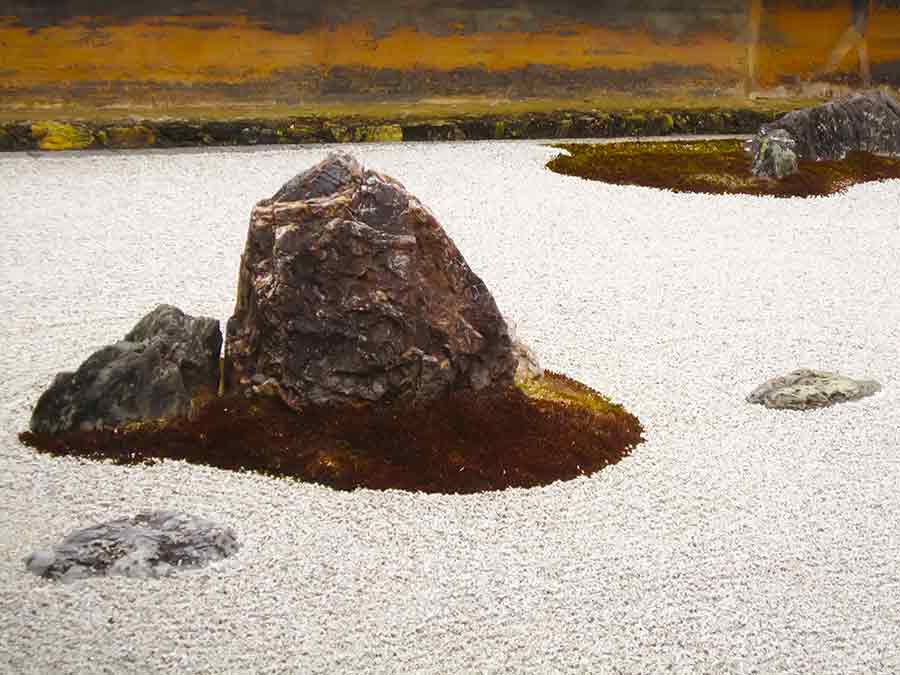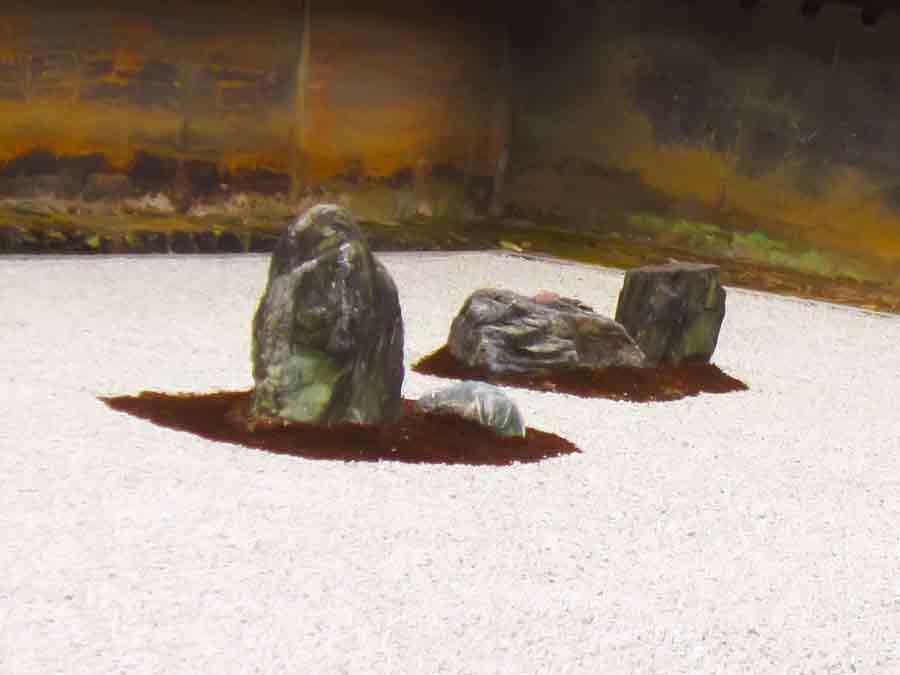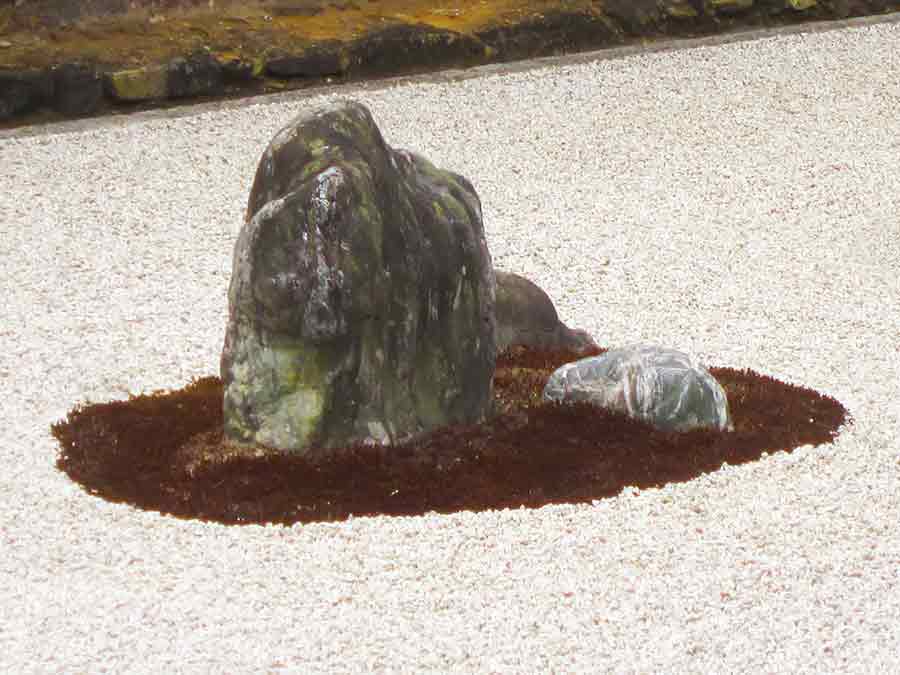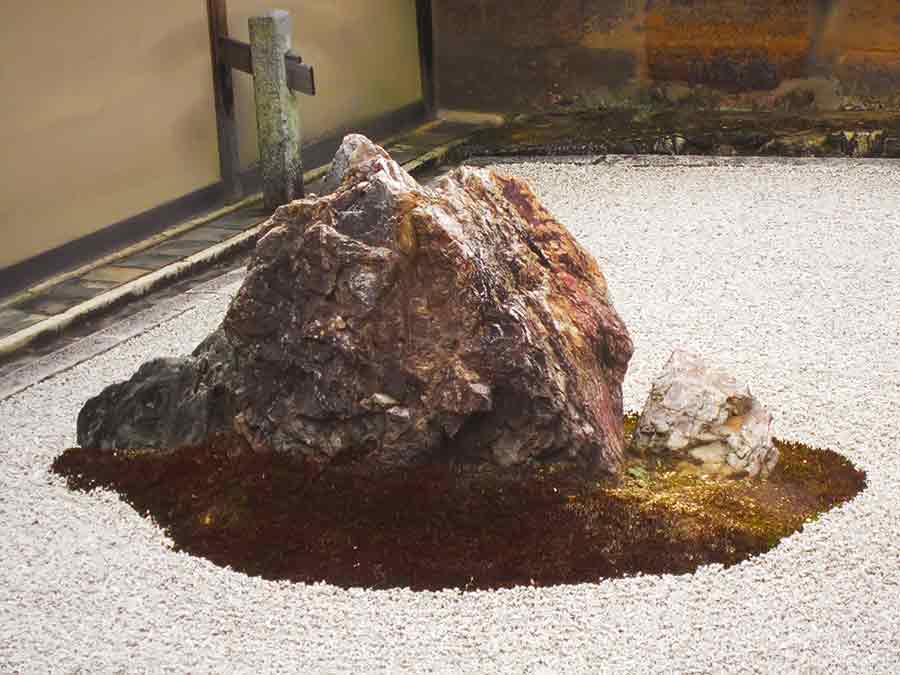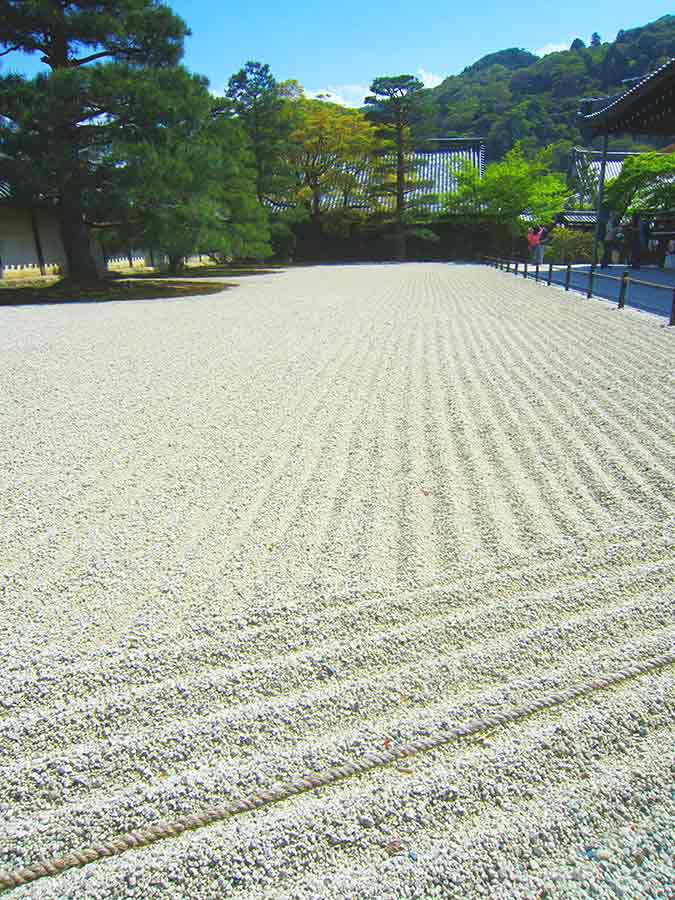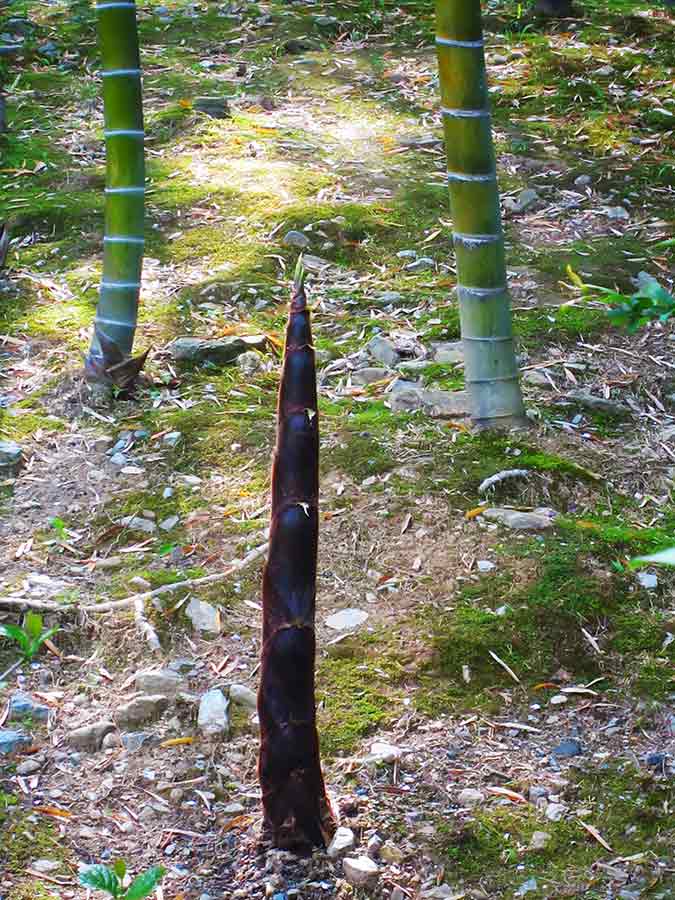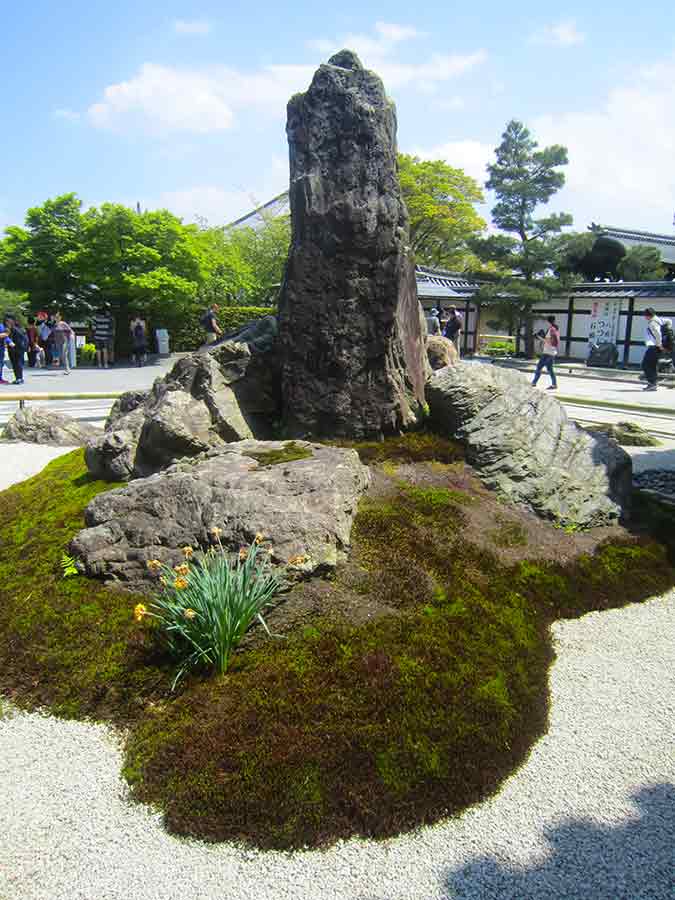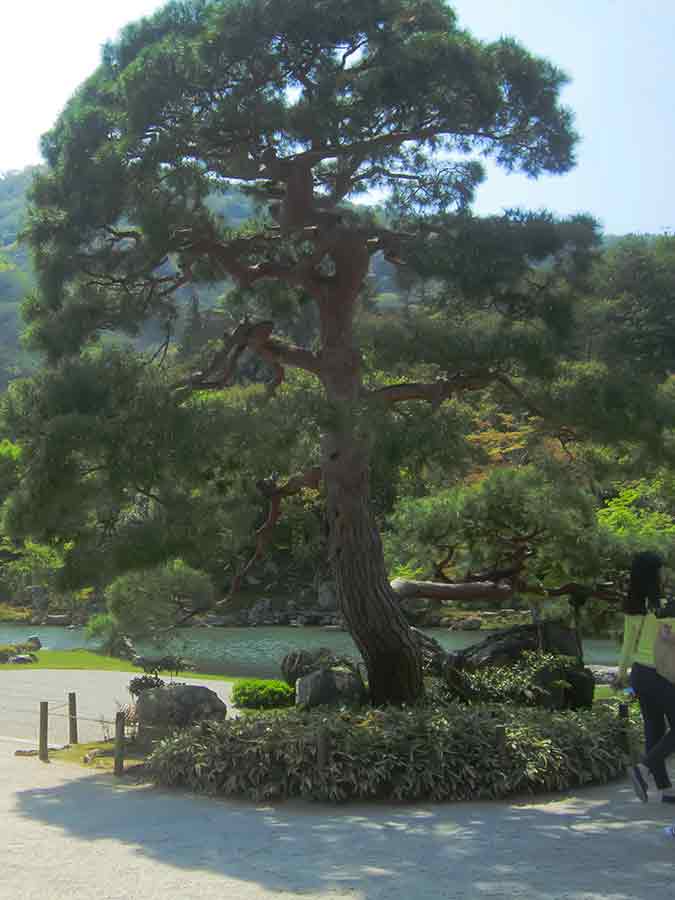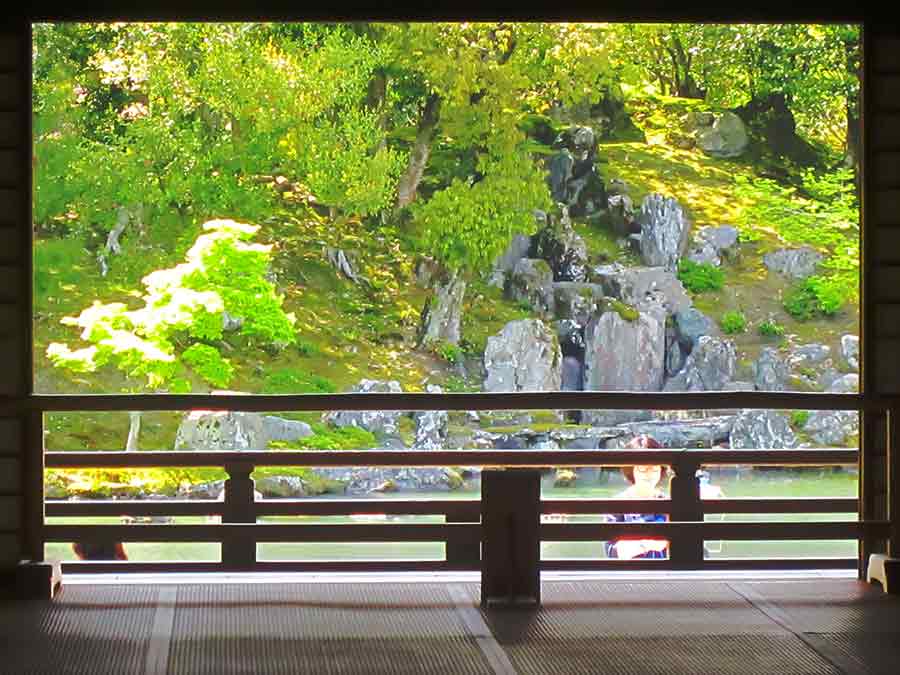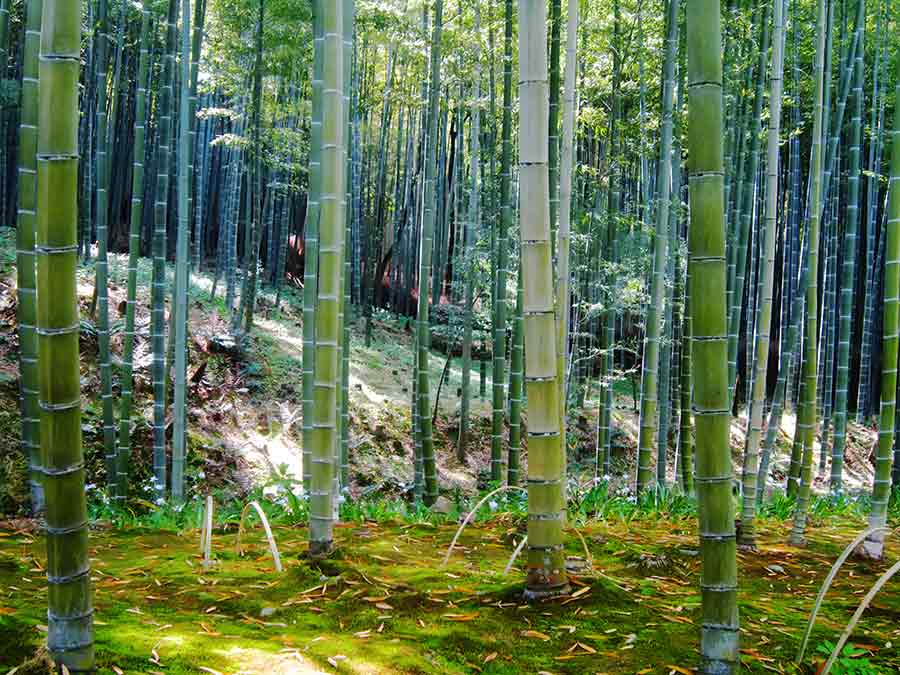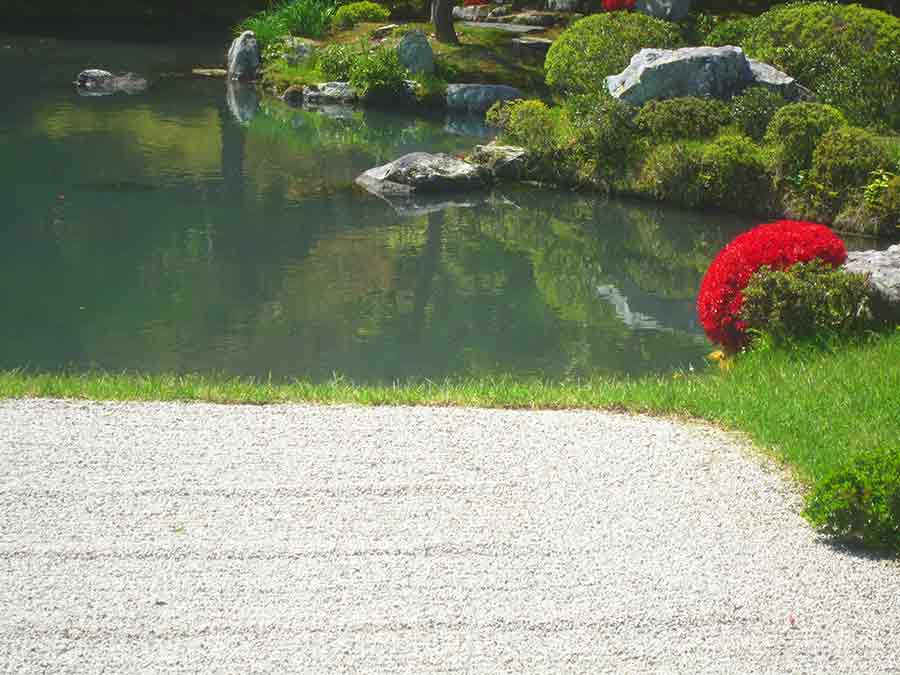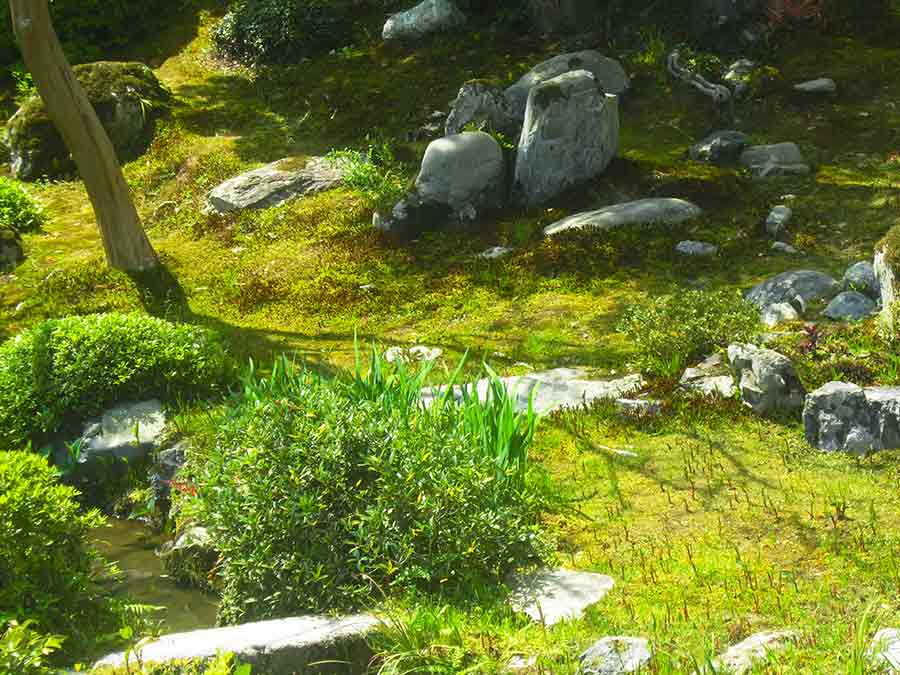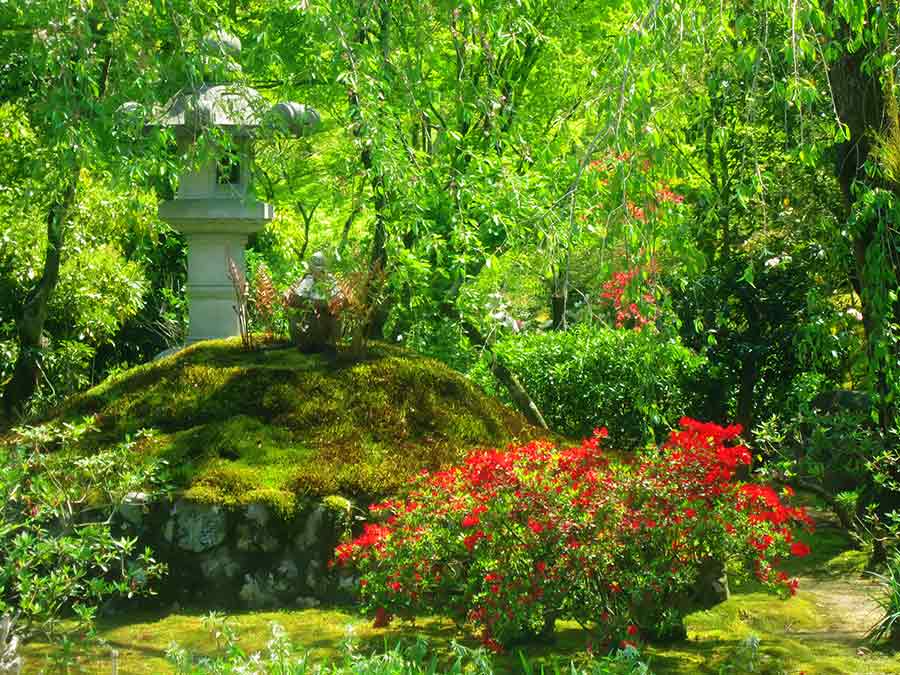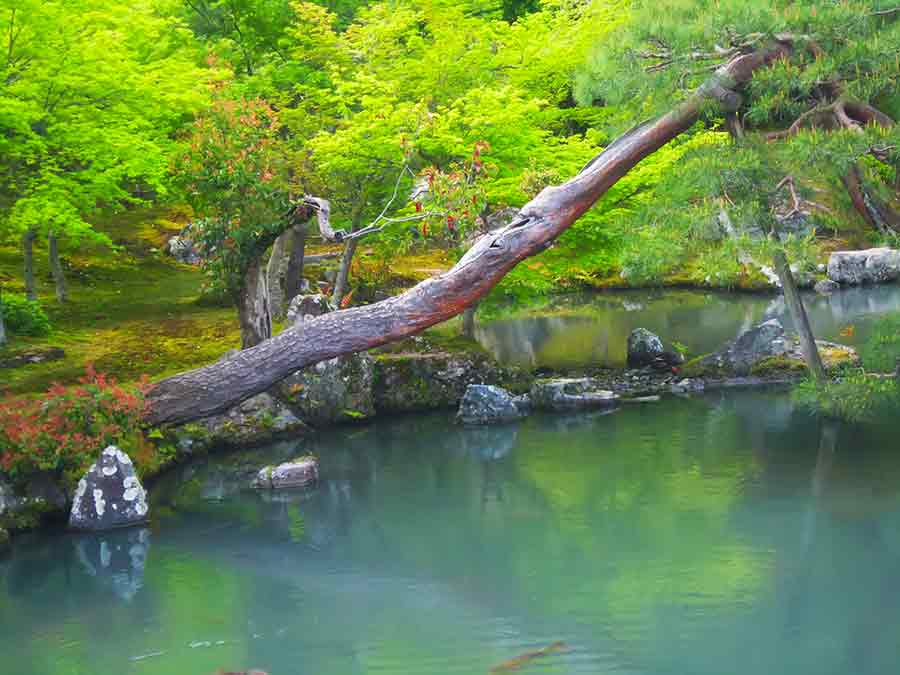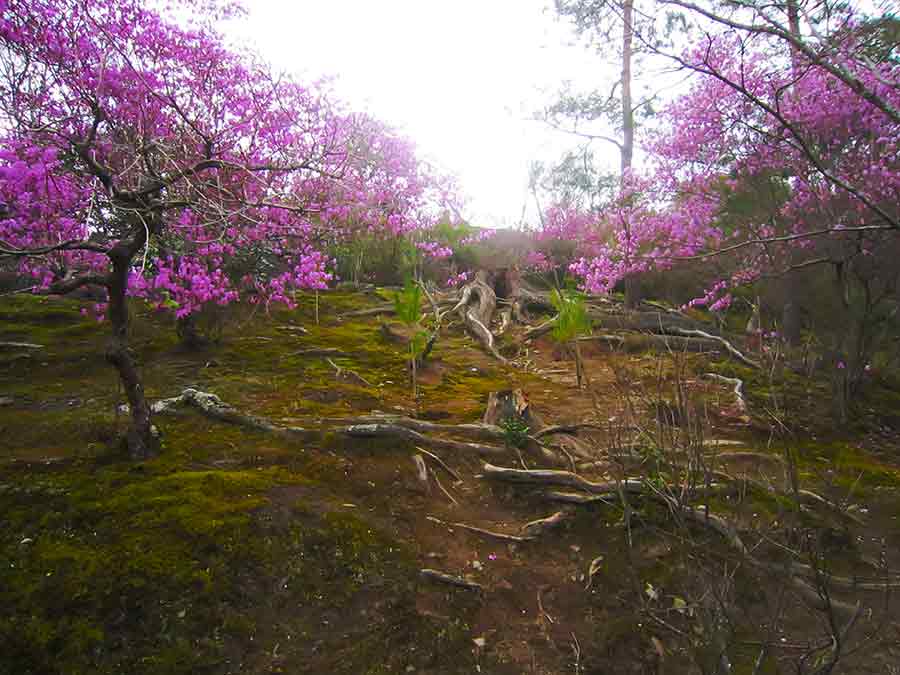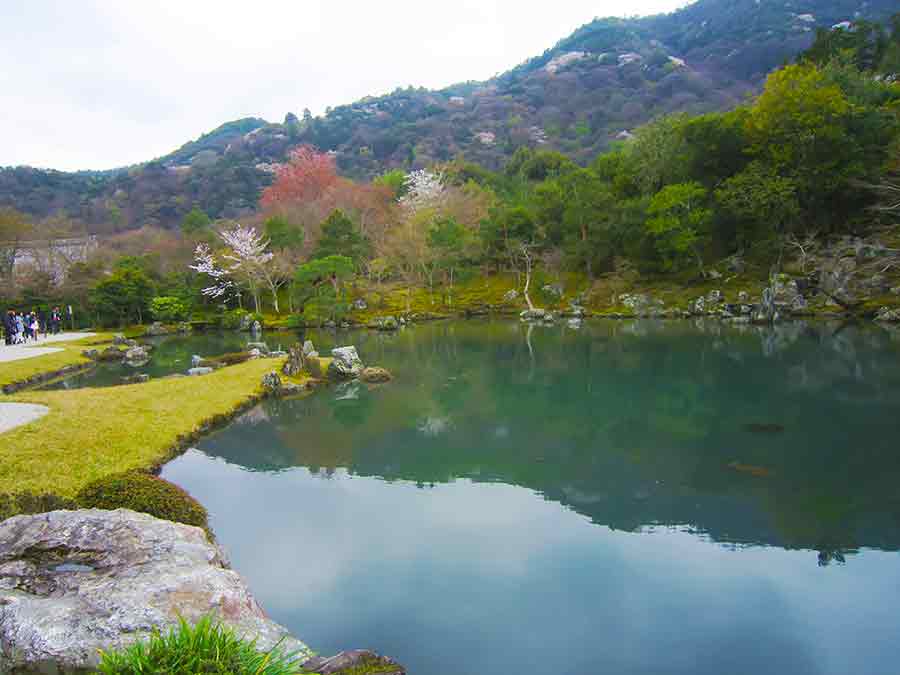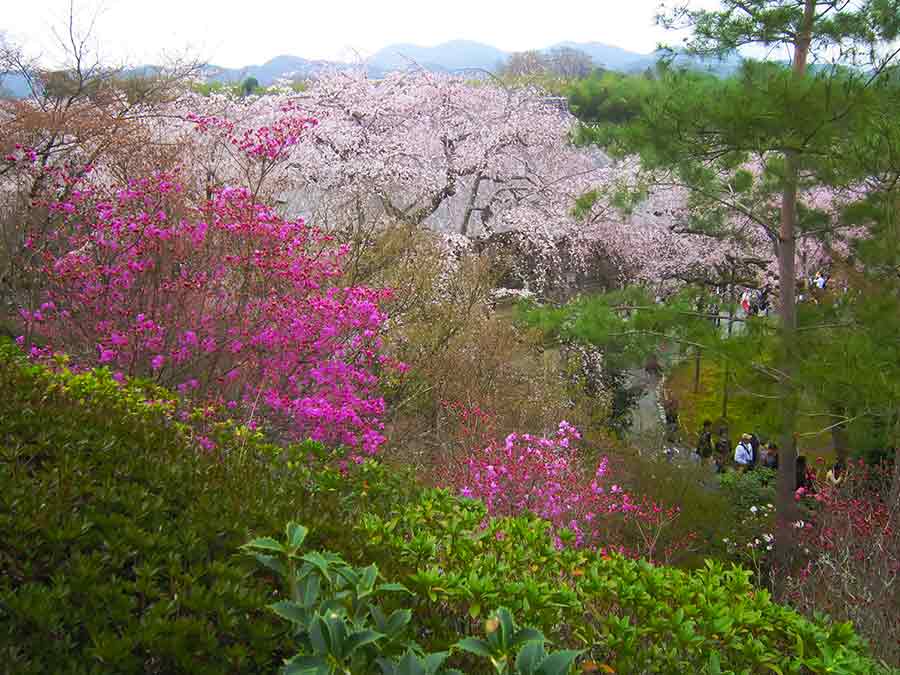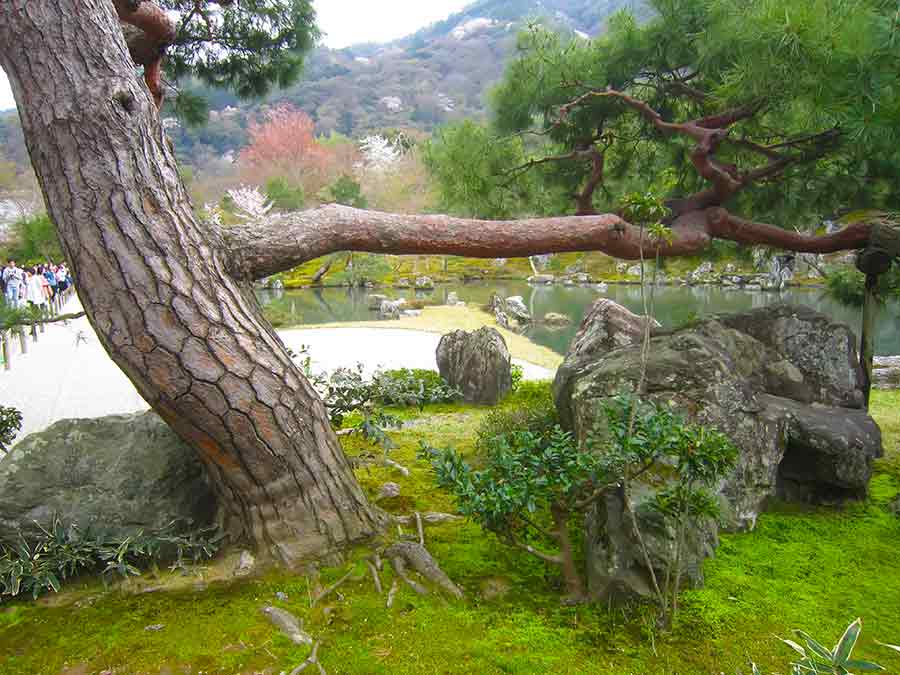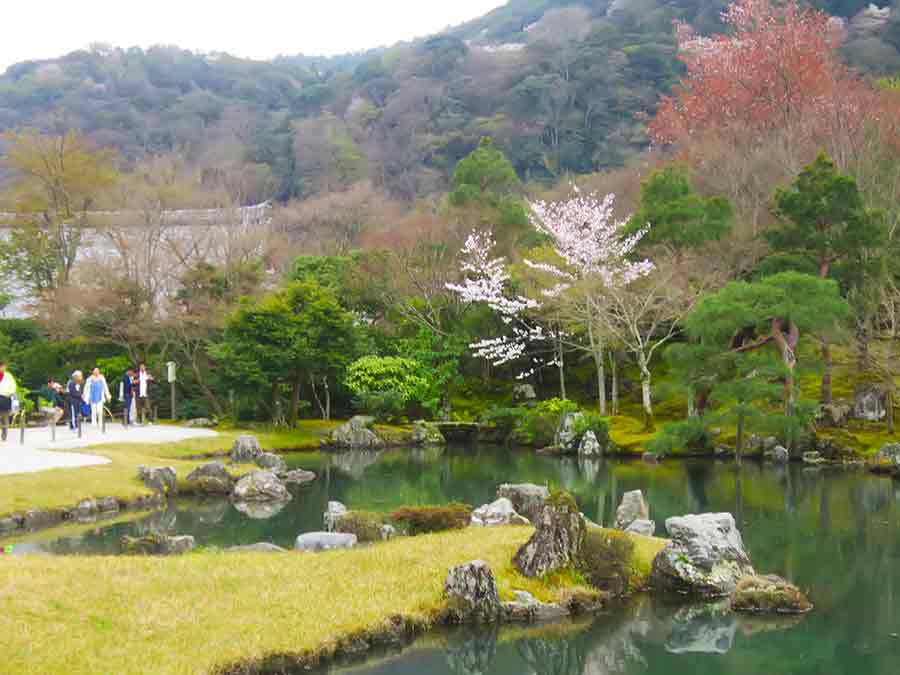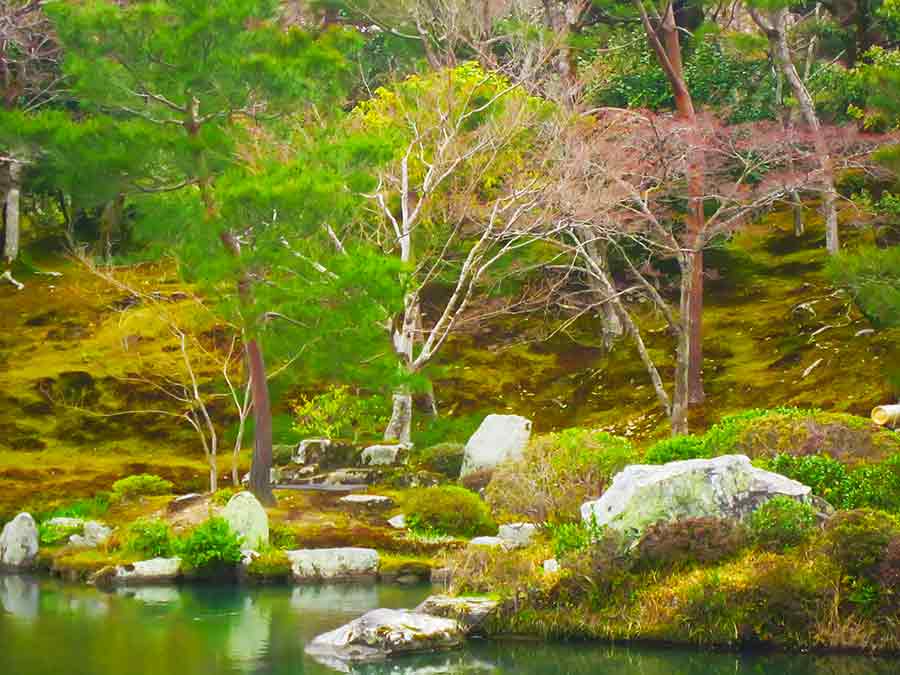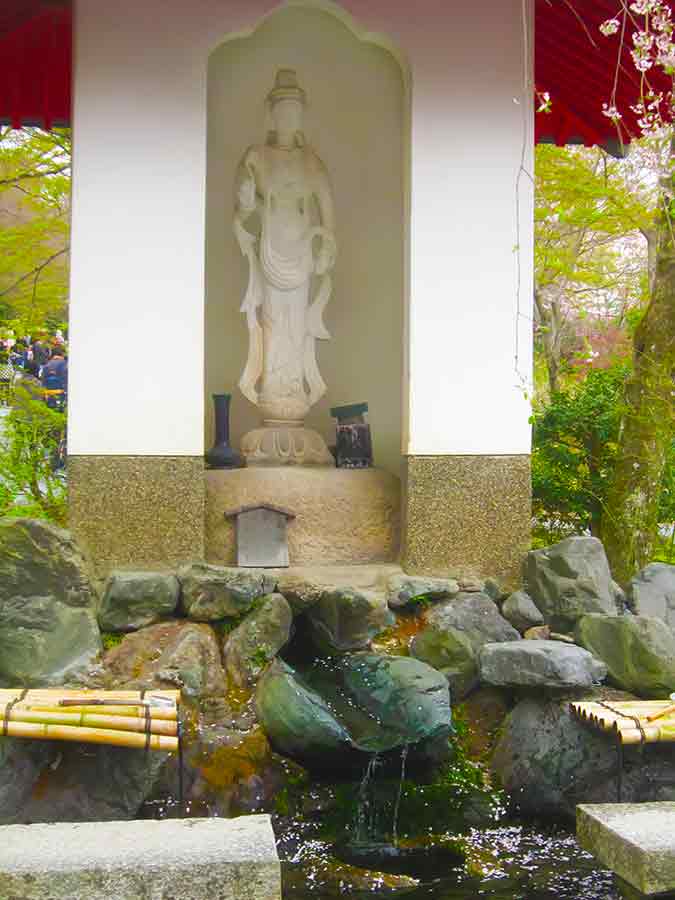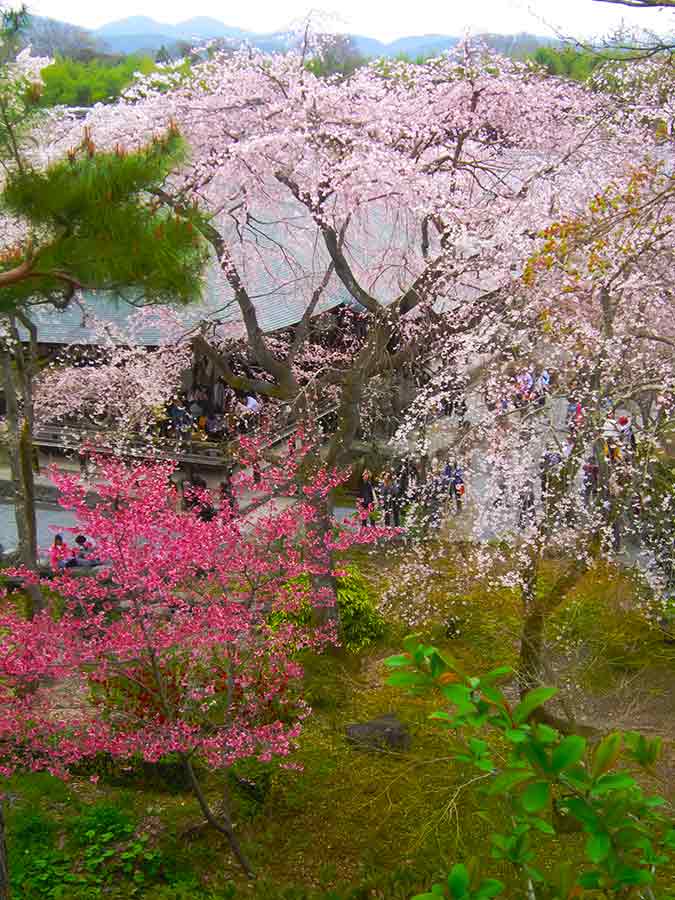The Soulful Zen Gardens of Kyoto: a Voyage of Serenity and Beauty
Kyoto, a city cradling the whispers of Zen, harbors an array of exquisite gardens, each exuding its distinct aura and intention. Among the myriad sanctuaries, Daisen-in, Ginkakuji, Ryoan-ji, Tenryuji, and Sogenchi stand as beacons of tranquility, inviting the weary soul to find solace within their embrace.
In these gardens, meditation and introspection find their haven, as simplicity and minimalism conspire to capture the quintessence of nature rather than merely mimic its outward form. As I meandered along the winding paths, the artfully arranged rocks, sand, and foliage seemed to beckon me, urging me to delve into the depths of my own existence, pondering life's enigmatic mysteries.
DAISEN-IN, GINKAKUJI, RYOAN-JI, TENRYUIJI, SOGENCHI
DAISEN-IN
Nestled within this sanctuary lies a quintet of intimate Zen gardens, meticulously tended and interwoven to narrate a tale of self-discovery. The 'River,' a meandering stream of pristine white gravel, mirrors the Buddhist metaphor of life's journey: a sojourn that commences at the foot of a barren waterfall, traverses the rapids and boulders, and ultimately finds its serenity in the gentle embrace of a tranquil sea. As the white gravel ocean stretches out before me, two stately gravel mountains stand sentinel, a testament to the enduring wisdom of ancient teachings.
GINKAKUJI GARDEN
The Ginkakuji Garden is a verdant oasis, where a picturesque pond cradles several islands and bridges, streams meander gracefully, and plants and trees stand as living sculptures. As I tread the path ascending the hill behind the temple, a breathtaking panorama unfolds before me, revealing both the temple's serene expanse and Kyoto's cityscape in harmony.
Within the Ginkakuji Temple's sacred grounds, the majestic sand cone known as the 'Moon View Platform' holds a revered place. In the evening, its surface catches the moon's shimmering light, casting an ethereal glow. Here, a monk would sit in quiet anticipation, awaiting the moon's ascent over the Higashiyama Mountains.
Just steps away from the Abbots' quarters, the 'Sea of Silver Sand' unfurls like a silken tapestry. This immaculate dry garden, encompassing 0.7 hectares, is a testament to the Zen ideals of simplicity and tranquility. Its two-foot sand platform, an abstract representation of the sea, invites the observer to contemplate the subtle beauty of nature's elements.
Zen Garden RYOAN-JI: The Temple of the Dragon at Peace
Ryōan-ji, a sanctuary where the world's most renowned Zen rock garden resides, harkens back to the 15th century when, for the first time, a Zen garden embraced pure abstraction. Within its 340 square meters, an enigmatic landscape unfolds. Void of plants, save for the mossy tufts adorning the stones, the garden thrives on the interplay between rocks and white gravel.
The walls, crafted from clay boiled in oil, have grown harder than concrete over the centuries, their surfaces adorned with intricate patterns birthed from the oil's slow seepage. A row of trees rises behind the wall, their verdant foliage providing a contrasting backdrop for the garden, the gravel gleaming ever brighter.
My fortunate visit in spring allowed me to witness the trees in full bloom, their blossoms cascading over the wall. Fifteen stones, varying in size, are meticulously positioned within the garden, comprising five distinct groups: one quintet, two trios, and two duos. These stones lie within a sea of white gravel, raked daily by devoted monks.
The garden reveals itself to the observer seated upon the hōjō's porch, the abbot's seat within the monastery. Yet, the arrangement withholds the complete composition from immediate view, leaving the observer to ponder the subtle intricacies of the design. From any perspective save an aerial view, a mere fourteen boulders reveal themselves.
Legend has it that the elusive fifteenth boulder unveils itself only upon the attainment of enlightenment.
TENRYUIJ: Temple of the Heavenly Dragon
Nestled within Kyoto's sacred grounds, the revered Tenryuji Temple holds the distinguished title of the foremost among the city's five great Zen temples. A world heritage site, it bears witness to the passage of time, its buildings succumbing to the ravages of fire and war throughout the centuries.
The present-day halls, though relatively recent, carry the temple's legacy with grace. Contrasting the temple's architectural journey, Tenryuji's gardens remain unscathed, preserving their original form through the ages. The masterful hand of Muso Soseki, the renowned garden designer responsible for the landscapes of other eminent temples, crafted this breathtaking sanctuary.
Encircling a serene pond, an ensemble of rocks, pine trees, and the embracing arms of the forested mountains meld together to create a living work of art. Tenryu-ji, the "Temple of the Heavenly Dragon," derived its name from a priest's dream of a celestial dragon ascending from the river's depths.
The rock garden within its sacred walls is a haven of exquisite beauty, where the stunning landscape design left me in awe. The Japanese study room, adorned with wall paintings, further enriches the temple's splendor. Muso Kokushi, the temple's founder, has bestowed upon the Tenryu-ji Temple Garden a sense of tranquility and grandeur that endures to this day.
SOGENCHI GARDEN
Tucked away behind the main hall of Tenryū-ji lies the enchanting Sogenchi Garden, a masterpiece conceived by the 14th-century garden maestro, Musō Soseki. Crafted in the "strolling garden" style, it invites the visitor to embark on a meandering journey of exploration and contemplation. Remarkably, the garden has been preserved with utmost care, retaining its pristine state as it was in its earliest days.
Sogenchi Garden boasts the esteemed designation of a Special Place of Scenic Beauty of Japan, a title well-deserved by this exquisite landscape. The garden embraces the tranquil Sōgen Pond, weaving a circular promenade around its calm waters. As one walks the path, the timeless beauty and harmony of nature reveal themselves, providing a sanctuary for the soul to find peace and rejuvenation.
As a final note, I invite you to delve deeper into the captivating beauty of Kyoto's Zen Gardens through additional photo-reportages on my website:
Zen Gardens - DAISEN-IN, GINKAKUJI, RYOAN-JI, TENRYUIJ, SOGENCHI
Myōshin-ji Zen Gardens
Tofukuji Zen Gardens
I also dedicated a special page to the awe-inspiring Zen Temples
in Kyoto: Zen Temples: MYOSHIN-JI, KENNIN-JI, GINKAKUJI, TOFUKUJI, DAITOKU-JI.
Allow yourself to be transported to these tranquil sanctuaries and immerse your soul in the harmony and serenity they offer.
